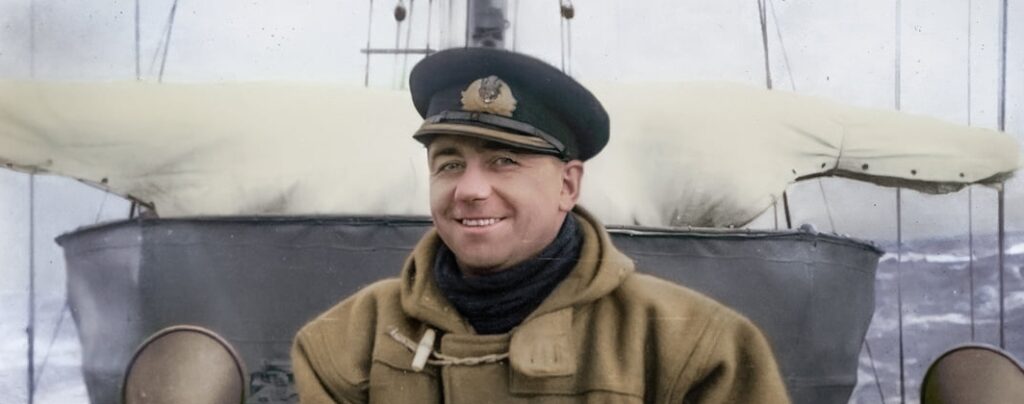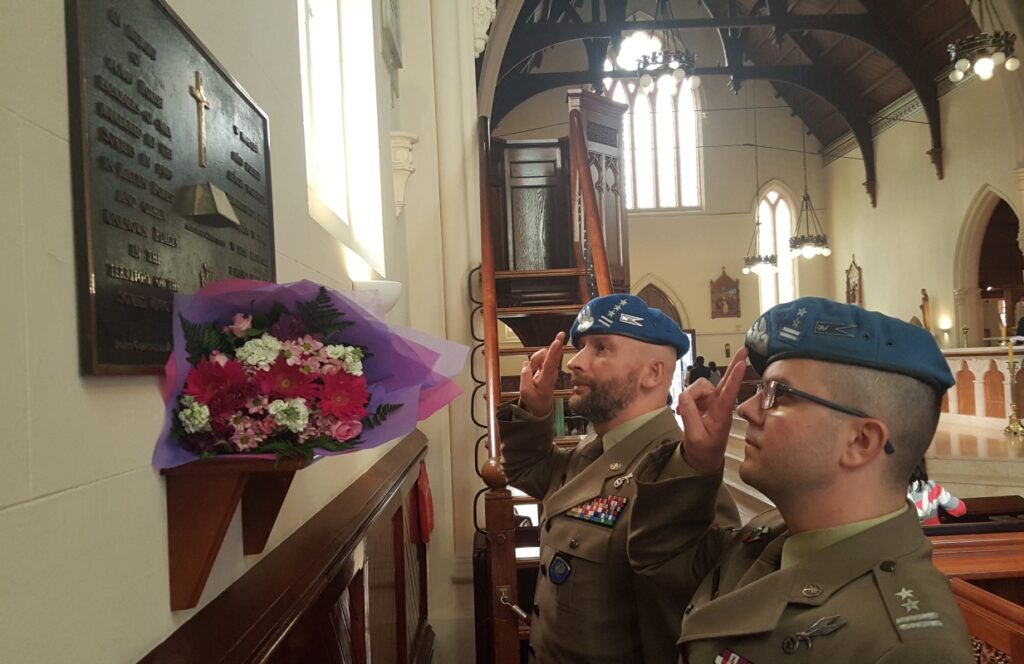Remembering Them
A few minutes before 7am on 28 April 1942, the deck watch on the Polish destroyer ORP Błyskawica saw six low-flying fighter aircraft approach from the south.
Their clear markings showed they were Luftwaffe. Their attack lasted less than a minute. They were gone before any alert was sounded on shore, but their raid foreshadowed a far more serious intent to damage and destroy the shipyards, aircraft factory, and the residential towns at Cowes and East Cowes on the Isle of Wight.
Eighty years ago today, the six planes flew in a “single line ahead” formation. The two on either side dropped their bombs on the shipyards and aircraft factory and they all veered away. The middle pair that flew over the Medina river, returned to drop bombs on either side of the ORP Błyskawica, docked in Cowes for repairs. The ship retaliated, and one of that pair flew away trailing black smoke after an “exceptionally violent turn.”
The attack left the ship without a mast, with her torpedo control destroyed, her RDF (Range and Detection Finding) capabilities “seriously damaged” and her superstructure battered. The damage suggested the planes were ME 109s, the light Messerschmitts that used bombs of “very small size with slight delayed action.”
The commander of the ORP Błyskawica, Wojciech Francki, recognised the Luftwaffe mission as German reconnaissance and, against British Admiralty protocols of the time, re-armed his ship. That deed resulted in the ORP Błyskawica being able to use all except its still-not-repaired heavy guns to repel the 160 German bombers that arrived during the night of 4–5 May. Commander Francki’s order to light and maintain “smoke candles” on shore sheltered the town from illumination by flares and fires. Instead of the enemy planes being able to accurately bomb a well-lit target from around 50 metres, the barrage from the ship forced them higher, which affected their ability to aim.
Every year Cowes and East Cowes commemorates the bravery and courage of the ORP Błyskawica commander and his crew, and the residents who staffed the towns’ ARP (Air Raid Precautions) headquarters and units. Although the towns lost 70 people, its residents know that without the Polish navy ship, the toll would have been far worse.

_______________
During the Anzac Day commemorations this year, I wondered whether Commander Francki, who lived in Auckland for nearly two decades after WW2, ever attended a post-war parade. The Polish military was snubbed at the massive, allied victory celebrations in London on 8 June 1946, and I doubt that many, if any, of the Polish veterans in New Zealand would have had the desire to be reminded that their years fighting “For Our Freedom and Yours” had been in vain.
In any case, by the 1950s, soon after most of the Polish veterans arrived in New Zealand, the day had lost its popularity—thanks to some local authorities extending the legal prohibition on commerce that day to include a ban on any entertainment or sport.
Nowadays, the increasing respect that we have for our fallen and our veterans is reflected in the number of services and those attending, including children who are encouraged to find out about their forbears’ contribution to war and peace efforts.
Polish names appear on every memorial that I have seen in districts where the early Polish settlers lived. Several thousand young Polish men fought with the New Zealand Expeditionary Forces in WWI at the same time as the New Zealand government put Poles who arrived here in the 1870s and 1880s, on its 1917 register of Enemy Aliens. Restrictions under that act decreed that they had to report weekly to their nearest police station, and had to carry a police permit if they wanted to travel farther than 20 miles.
While Poland fought for the allies in WW2, its own Armed Forced Day is on 13 August, to commemorate its 1920 victory over Soviet forces during the battle in Warsaw known as the Miracle on the Vistula.
This year I again attended a small ceremony to honour the almost 22,000 Polish prisoners-of-war executed by the NKVD, Stalin’s Secret Police, in April and May 1940, and buried in mass graves in the Katyń forest in western Russia. The Auckland function is organised by the Honorary Consul for Poland in Auckland, Bogusław Nowak, and takes place at the Cathedral of St Patrick and St Joseph, which holds a plaque dedicated to the Katyń victims. It was arranged by members of the Auckland Polish Association in 1990, at a time when the total dead still numbered 14,500.

—Barbara Scrivens
29 April 2022
_______________
Find a fuller story of Commander Wojciech Francki on: https://polishhistorynewzealand.org/commander-wojciech-francki/
Although several individual family stories on our Early Settlers page include sons who fought in WWI, the story of the first eight Polish families in Taranaki also covers the Poles’ battle regarding the 1917 Enemy Alien register: https://polishhistorynewzealand.org/under-the-mountain/
Find a fuller story on the Katyń massacres at: https://polishhistorynewzealand.org/katyn-the-unspeakable-crime/
_______________
If you would like to comment on this post, or any other story, please email editor@polishhistorynewzealand.org/
